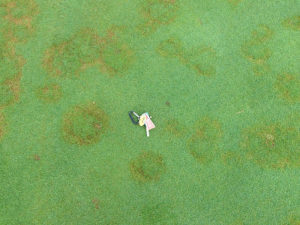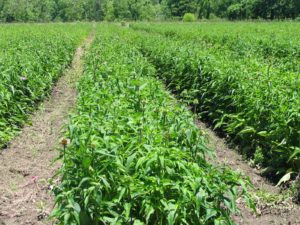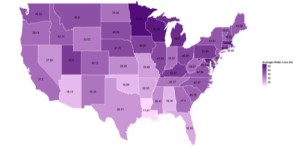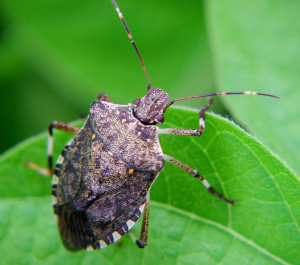
Got Creeping Bentgrass Problems?
Imagine this. Rain followed by heat stress = creeping bentgrass problems. Just last week we diagnosed our first cases …



El inglés es el idioma de control de esta página. En la medida en que haya algún conflicto entre la traducción al inglés y la traducción, el inglés prevalece.
Al hacer clic en el enlace de traducción se activa un servicio de traducción gratuito para convertir la página al español. Al igual que con cualquier traducción por Internet, la conversión no es sensible al contexto y puede que no traduzca el texto en su significado original. NC State Extension no garantiza la exactitud del texto traducido. Por favor, tenga en cuenta que algunas aplicaciones y/o servicios pueden no funcionar como se espera cuando se traducen.
Inglês é o idioma de controle desta página. Na medida que haja algum conflito entre o texto original em Inglês e a tradução, o Inglês prevalece.
Ao clicar no link de tradução, um serviço gratuito de tradução será ativado para converter a página para o Português. Como em qualquer tradução pela internet, a conversão não é sensivel ao contexto e pode não ocorrer a tradução para o significado orginal. O serviço de Extensão da Carolina do Norte (NC State Extension) não garante a exatidão do texto traduzido. Por favor, observe que algumas funções ou serviços podem não funcionar como esperado após a tradução.
English is the controlling language of this page. To the extent there is any conflict between the English text and the translation, English controls.
Clicking on the translation link activates a free translation service to convert the page to Spanish. As with any Internet translation, the conversion is not context-sensitive and may not translate the text to its original meaning. NC State Extension does not guarantee the accuracy of the translated text. Please note that some applications and/or services may not function as expected when translated.
Collapse ▲
Imagine this. Rain followed by heat stress = creeping bentgrass problems. Just last week we diagnosed our first cases …

Today I saw my first eastern tiger swallowtail butterfly of the year in my pollinator garden in Pittsboro, and …

8/4/2022 – This is an old article from July 2014, but I am leaving it here to illustrate some …

7/5/2022 – This is an old article, but I am leaving it here to document the beginnings of the …

8/24/2022 – This article was originally posted on July 2, 2014. It remains here as a document of the …

Farmers and gardeners who grow blueberries may notice damage to the developing berries caused by the cranberry fruitworm. The …
Over the past couple of weeks, a very familiar turfgrass disease, dollar spot, has begun its assault across much …
In an earlier Alert I wrote that green-up of our warm-season grasses was late in 2014. At that time …

7/6/2022 – This article was first posted on May 23, 2014, but the video is still relevant (and getting …
Things have been relatively quiet here at the NC State Turf Diagnostics Lab with regards to disease samples, however …

10/21/2022 – The article below was written over seven years ago, but we still have herbal manufacturers looking for …
March and April are the typical months to notice the activity of ground-nesting bees in turf. Ground nesting bee …

Answer: Another year, another survey, and the findings remain less than encouraging. It seems counter-intuitive that we don’t have a …

The website for brown marmorated stink bug research in NC has been moved and updated! A summary of current …
The cold weather this winter is reminiscent of the winters we had during the early 1990’s. From 1990 to …

Answer: Probably not, but it’s interesting that it is found in bees at all Honey bees are hosts to more …
Cream leaf what? That’s the exact response I’ve heard from superintendents over the past several weeks when I tell …

The Southern Region Small Fruit Consortium (SRSFC) 2014 Caneberry IPM Guide is now available. This annaully updated guide contains information on insect, weed, …

This vegetable pathology factsheet describes the identification and treatment of anthracnose of pepper.

Establishing and maintaining quality annual color beds requires a plan to prevent and control weeds. …

This publication describes the invasive Callery pear species, its offspring, and how it can harm …
This factsheet describes the biology of the cane lace bug or bamboo lace bug, Leptodictya …

This factsheet describes the biology of the banded sphinx moth or lesser vine sphinx, Eumorpha …

This factsheet describes the biology of the elm-grass root aphid, Tetraneura ulmi, and provides residential …
This publication for homeowners and landscapers describes how to mow, fertilize, irrigate, and control weeds …

A muscadine virus survey was conducted in 2024 to assess the incidence of grapevine viruses …